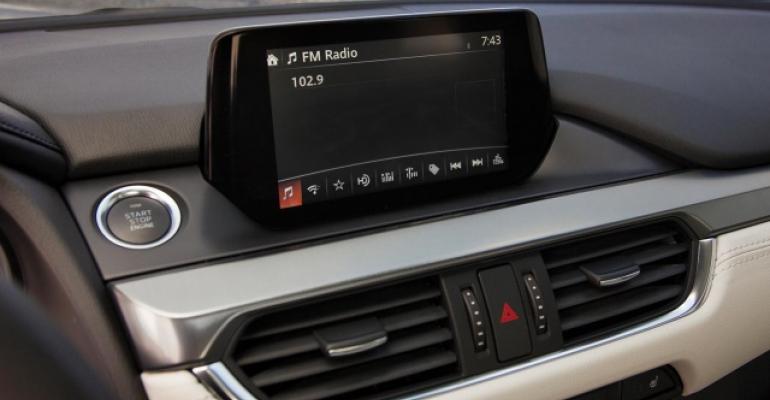The rise of the connected car has changed the value equation in new-car development. Software companies and online content providers now are key players. Automakers have to work harder to hang on to their brand trademarks when it comes to the driving experience.
Mazda is exploring new ways to remind owners that they are driving a Mazda. It is doing that by creating apps “that allow you have an even deeper connection with the car,” Julien Mountousse, the new design director at Mazda North American Operations tells automotive journalists earlier this month.
The challenge, industry experts say, will be to hold on to the positive traits of Mazda’s current connected-car experience, which they describe as already excellent.
Mountousse specifically mentions 3-D navigation, eye-capture and augmented reality as three areas of interest.
“In the future, all these apps are digital apps that can be executed by Mazda,” he says.
Mazda spokesperson Jacob Brown declines to give more details on what the automaker might be doing in those areas, saying Mountousse “was discussing all nature of technologies that the design team is working with from a hypothetical standpoint of what could be in future generations of Mazdas. I can’t speak with any specificity as what he was mentioning, but we’re studying the various ways any given technology can benefit consumers.”
Adding new features to Mazda Connect, the current connected-car system, is important if the automaker wants to stand out in the mass-market segment, says Scott Frank, vice president- marketing at Airbiquity, a Seattle-based telematics service provider. Mountousse’s comment is “a recognition that Mazda has decided there is strategic value to deploying a connected-car system that is differentiating, and they are going to chase that down,” Frank says.
Suppliers already are working on all the technologies Mountousse mentioned, says Mark Boyadjis, senior analyst and manager-infotainment and HMI at IHS Automotive. But there is room for Mazda to get ahead of the suppliers in at least one area: 3-D navigation. Mazda would need to create navigation that uses augmented reality to enhance what the user could see outside the screen.
That is a “relatively untouched area,” Boyadjis says. “Mazda and other automakers could push the limit there.”
Mazda also can begin offering more connected-car apps that use data generated by the car and then sent into the cloud, Frank says. Mazda could take that information and return it to the car to be used in new applications such as learning about the driver’s interests and presenting opportunities ranging from a better route home to stopping for a drink at a bar where some of the driver’s Facebook friends are. An app that would set boundaries letting a diligent parent know when a child was driving outside a specific area could be popular.
Those and other kinds of “connected-car 3.0” services could be branded by the automaker, Frank says.
It’s not that Mazda doesn’t already have a good connected-car offering in Mazda Connect. Boyadjis says he considers it one of the best on the road today in terms of ease of learning and use. “It does the primary task of infotainment very well,” he says. “They need to be careful not to add features without losing the ease of use of that system.”
But Mazda is aiming to change its brand image. The new design language for its dealerships is meant to project a premium feel. The vehicles in those dealerships may need a connected-car offering that is more advanced than the current generation of Mazda Connect.
Mazda will need to “up the ante,” says Frank.





